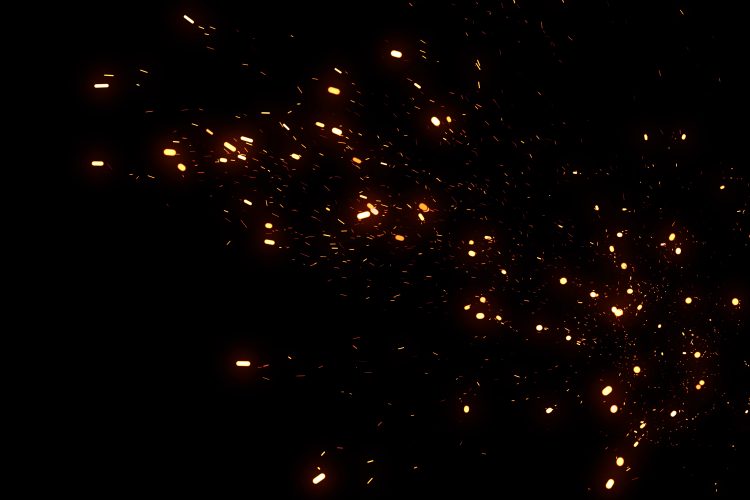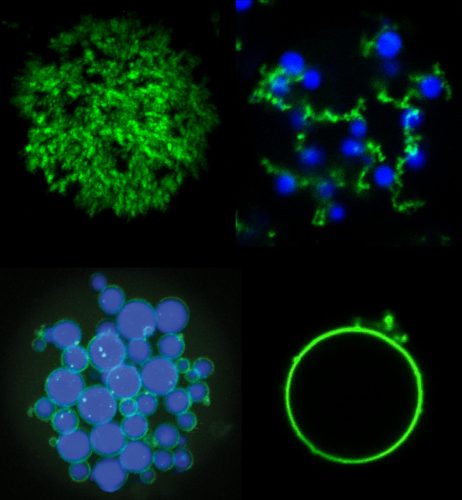Novel biocompatible microparticles can be created using heat and light
Posted: 16 March 2020 | Hannah Balfour (Drug Target Review) | No comments yet
Scientists have demonstrated an innovative technique for creating microparticles for tissue engineering out of a combination of disordered and partially ordered proteins.


Researchers exploring the applications of intrinsically disordered proteins (IDPs) and partially ordered proteins (POPs) have developed a method for making small particles for drug delivery, diagnostics and tissue engineering.
“With nothing more than some heat and light, we can make some pretty bizarre microparticles,” said Stefan Roberts, a biomedical engineering research scientist at Duke University, US. “The technique is simple enough that it could be scaled up to make billions of microparticles in a matter of minutes.”
Many features of biocompatible microparticles can be dictated by their intrinsic properties; however, to fabricate complex microparticles requires sophisticated manufacturing techniques which the researchers say have disadvantages. Multi-emulsion microfluidics, for example, tightly controls oil droplets but often fails to keep materials separate and cannot be used in large-scale production. Flow lithography is another, where light shone on a patterned mask etches shapes into soft materials but is apparently hard to tailor to complicated shapes and internal architectures.
The researchers in this study had previously worked with elastin-like polypeptides (ELPs), which are IDPs that derive their stability from chaos and have no true shape, this time they also used POPs, which retain many of the ELPs’ biologically useful properties but have enough ordered segments to provide more stability.
Both can be engineered to react to shifts in temperature, moving them back and forth between phase states. While this is a useful feature for applications such as slowly releasing drugs into the body or supporting tissue growth in wounds, the researchers soon discovered that they could also create various particle shapes by putting ELPs and POPs together.
“Disordered proteins are a hot topic in biology, with many researchers trying to discover how proteins without shape can still have a biological purpose,” said Roberts. “An undercurrent of our work is to instead think of these proteins as a materials scientist would and see if we can engineer them for our own biological functions in ways that cannot be achieved with current materials.”


Mixtures of POPs (green) and ELPs (blue) can be used to create a variety of new microparticle architectures including (clockwise from upper left) porous particles, ‘fruits-on-a-vine’ networks, single hollow ‘vesicle-like’ particles and core-shell networks (credit: Stefan Roberts, Duke University).
In their paper published in Nature Communications, Roberts and collaborator Professor Ashutosh Chilkoti demonstrated that their new microparticles, made with both ELPs and POPs, could be created in a range of shapes dependent on the assembly temperatures. They created a shell with a solid core, a shell with no core and a tangle of cords dotted with shells that they dubbed ‘fruits on a vine’. They then added photosensitive amino acids to these proteins and revealed that a flash of light could be used to solidify the microparticles and fix them in their shape.
According to the team, the ability to create microparticles with precisely separated regions is important for applications such as drug delivery and tissue engineering.
The conclusion was that each temperature simultaneously created millions of solid, biocompatible microparticles in only a few minutes. The total volume of the liquid required is roughly that of a drop of water, according to the team.
“This is a test case for a type of material that is flexible and simple enough to create both commonly used shapes and architectures that aren’t seen using current techniques,” said Roberts. “We’re using new biocompatible materials to create never-before-seen shapes simply by heating, cooling and shining a light on them.”
Related topics
Bioengineering, Drug Delivery, Microfluidic Technology, Protein, Proteomics
Related organisations
Duke University
Related people
Ashutosh Chilkoti, Stefan Roberts



